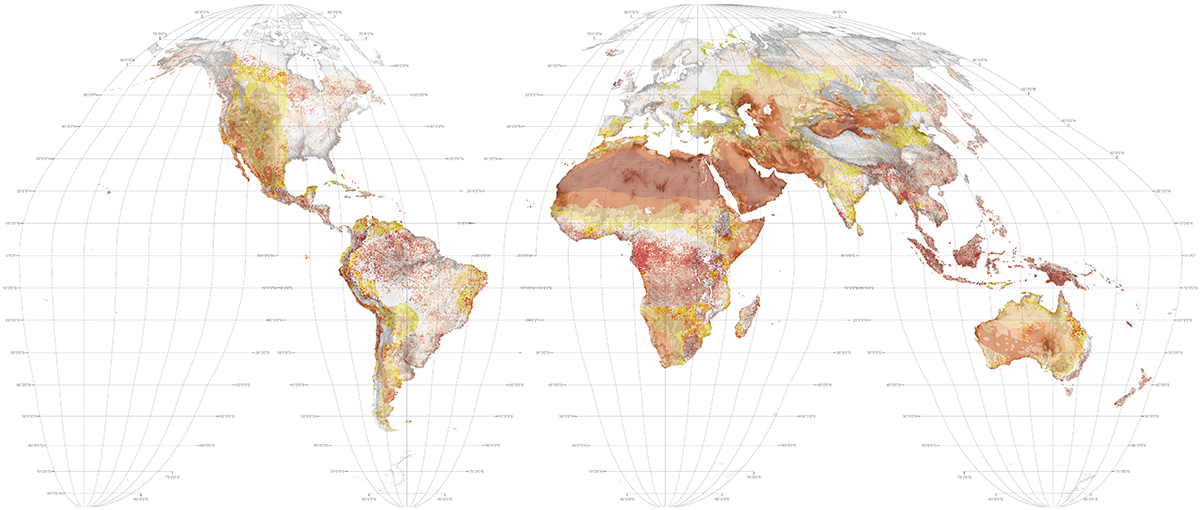Land degradation is defined by the Food and Agriculture Organization (FAO) of the United Nations as "a long term decline in ecosystem function measured in terms of net primary productivity." 1 Primary productivity is the synthesis of organic material from carbon dioxide occurring primarily through photosynthesis. Measured changes in primary productivity show a cumulative global loss of vegetation resulting from a number of factors including climate, terrain, soil and land use. Land degradation is an insidious process resulting from economic and population pressure manifesting in the over-use of limited landscape resources. When such processes occur in dryland ecosystems the process of degradation is referred to as desertification.
In 2008 the FAO reported that 20% of all cultivated areas, 30% of forests and 10% of grasslands are degrading. 2 52% of the land used for agriculture is moderately or severely affected by soil degradation and 12 million hectares of once productive land are lost to desertification per annum. 3 Nearly 1.5 billion people depend directly on degrading land for their livelihoods, most of them in the so called 'developing world'. 4 Land degradation leads to food insecurity which can in turn lead to conflict, migration and inevitably, the loss of biodiversity. Less tangible, but no less significant is that the process of degradation not only erodes the land, it also corrodes the spirit of communities watching their homelands turn into wasteland.
Coordinated global action concerning desertification is organized through the United Nations Convention to Combat Desertification 5 and more recently reinforced through the United Nations Sustainable Development Goals. 6 Climate change may well open new landscape niches for humanity but in the short term it will also exacerbate the difficulty of surviving in today's degrading landscapes.
1 Food and Agriculture Organization (FAO) of the United Nations, "Land degradation on the rise," FAO Newsroom (July 2, 2008), http://www.fao.org/Newsroom/en/news/2008/1000874/index.html.
2 Ibid..
3 United Nations Convention to Combat Desertification, "Desertification, land degradation & drought (DLDD): some global facts & figures," http://www.unccd.int/Lists/SiteDocumentLibrary/WDCD/DLDD%20Facts.pdf (accessed September 9, 2016).
4 Ibid.
5 United Nations Convention to Combat Desertification, http://www.unccd.int/en/Pages/default.aspx.
6 United Nations Sustainable Development Goals, http://www.un.org/sustainabledevelopment/biodiversity/.
1. Loss of Net Primary Productivity
FAO, Rome, "Global NPP Loss In The Degrading Areas (1981-2003)" (2008). Available at http://www.fao.org/geonetwork/srv/en/metadata.show?currtab=simple&id=37055 (accessed November 11, 2014).
2. Drylands
UNEP-WCMC, 2007 A spatial analysis approach to the global delineation of dryland areas of relevance to the CBD Programme of Work on Dry and Subhumid Lands. Dataset based on spatial analysis between WWF terrestrial ecoregions (WWF-US, 2004) and aridity zones (CRU/UEA; UNEPGRID, 1991). Dataset checked and refined to remove many gaps, overlaps and slivers (July 2014). Available at http://www.unep-wcmc.org/resources-and-data/world-dryland-areas-according-to-unccd-and-cbd-definitions (accessed July 14, 2014).





